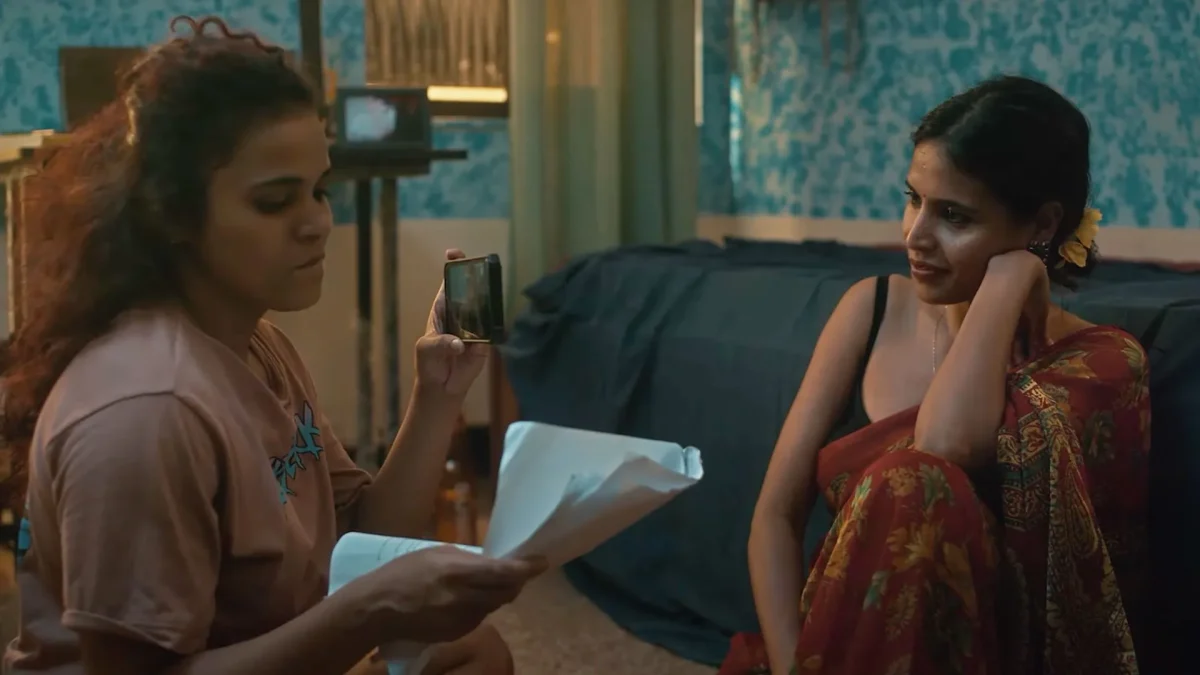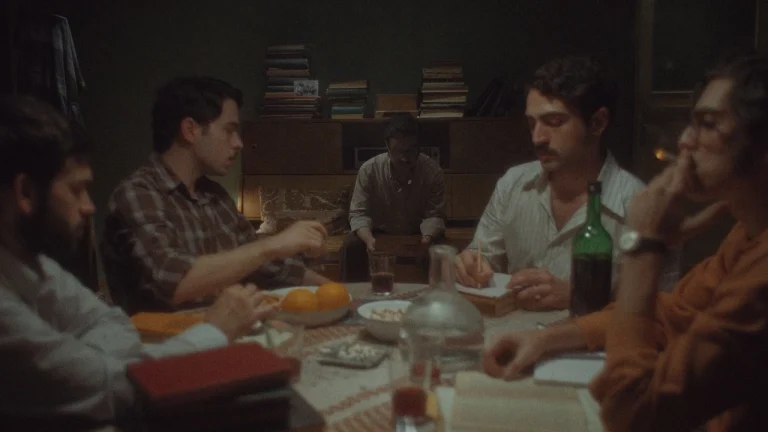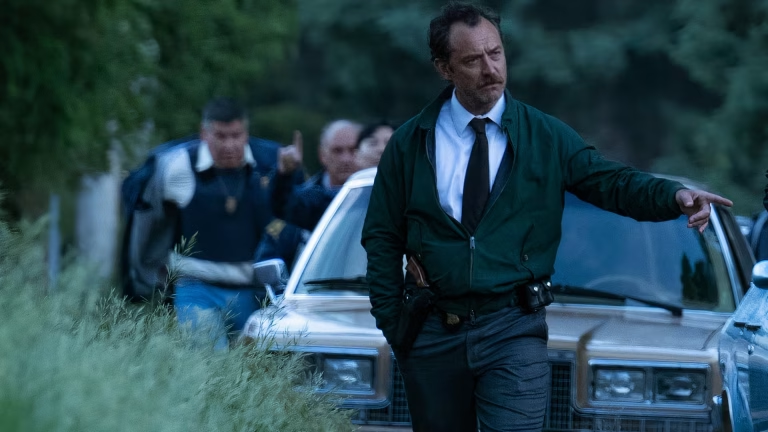A quiet tale of friendship, desire, and the seemingly impossible pursuits of it, Anuparna Roy’s debut film, “Songs of Forgotten Trees,” first premiered at the 82nd Venice International Film Festival in the Orizzonti section, where she won Best Director. Since then, it has traveled the world and also competed for the Sutherland Award at the 2025 BFI London Film Festival.
Set in Mumbai, the film revolves around Thooya (Naaz Shaikh), an aspiring actor and part-time sex worker, and Swetha (Sumi Baghel), a call centre service agent and Thooya’s new sublet. The two women, their shared space, and their increasingly shared lives occupy the film’s heart. Within these, Roy has woven various class and caste issues that urban women interact with every day, but cannot dwell on them for too long. Apparently, the city doesn’t allow time, and the world allows no room.
This idea of spaces and absences is what Roy wanted to explore in the film, becoming the first Indian filmmaker to win the Best Director award in the Orizzonti category. Quiet visuals such as wires obstructing beautiful skies, boxed-in homes unheeding of privacy, and long shots of trees from lost time invite us into the world of Thooya and Swetha. Their initial meeting is that of strangers, which slowly, yet surely grows into friendship and compassionate cohabiting – not so surprising for flatmates, yet still refreshing. The two are interested in each other’s lives, but this interest borders on intrusion, which is unintended yet inescapable.
Thooya is an urban woman – she speaks English, regularly seeks therapy, goes to acting school, and, like the dutiful elder sibling, helps out her younger brother. But her heart calls out to Jhuma, a childhood friend with whom she lost contact years ago. The film echoes the memory of Roy’s lost friend, Jhuma Nath, a Dalit girl married off at thirteen under the guise of state policy. These relationships and homes, once part of her but are nowhere to be found now, perhaps embody the idea of forgotten trees. Behind and outside doors, Thooya constantly puts on an act.
A pretense that’s sometimes willingly broken by intimacy, and sometimes forcefully, using subjugation and emotional violence. Nitin, Thooya’s landlord and sugar daddy, is a cruel man whose celibate wife employs Thooya’s services. Underneath his flirtation and sexual fantasies lies something sinister. Both women wish that he’d leave them alone, but the burden of catering to the man’s desire is transferred from one to another. Even in this modern, urban world, women don’t have consensual relationships. They lack the choice of not sleeping with their husbands if they don’t wish to.

Swetha faces various crises in her professional and personal life. Her corporate job requires her to smile through rude and untoward conversations. The men she interacts with feel entitled to insinuate flirtation with a stranger, simply because she’s a woman. Through female experiences, Roy weaves the portrait of the average Indian man and the world they inhabit, which is a cruel one for women to reside in. In their first meeting, the first question a prospective groom asks is if she’s “brahmin.” Caste and class boundaries affect companionship, even now. Untethered in the world, she finds some ground in sharing her life with Thooya, making best attempts to replace Jhuma, or rather, embody her. Reading lines and singing songs together, she wishes Thooya would stop her sex work, but she never judges.
Aside from friendship, desire is a major theme in the film, as is its prevalent binary. Men’s desire is almost always attached to women’s pain. Female desire is always at the precipice, either restrained or reduced by the man’s desire. At every moment, the film hinges on going from being platonic to becoming a romance, stringing us along in a will they, won’t they fashion. Personally, I don’t think love is the important question here. It is finding what love and intimacy mean to them.
As the characters struggle to define this desire, they are bogged down by seemingly minuscule but unending troubles. We see them, feel them, and move on to the next relentlessly. Roy paints a realistic picture of everyday micro oppressions that women’s lives are embroiled in. All touch and go – we cannot dwell – merely see the issues affecting women’s lives, solving which is beyond their power. Nothing can be done.
An obvious parallel can be drawn to Payal Kapadia’s “All We Imagine As Light” (2024), with the similar setting of two roommates in Mumbai, but that’s where the comparison ends. One is concerned with the lyrical relationship of Mumbai and its people; the other deals with the horrific lives of women in urban and rural settings. Despite leading independent lives, they’re not ever free. “Songs of Forgotten Trees” provides us no respite. It builds up towards the culmination of a new friendship, yet leaves us hanging dry. There is no respite. Which, perhaps, is the point of it, but it didn’t sit well with me. In writing this review, I do understand it better, but it still doesn’t speak to me as I hoped it would.
Absences and hollow loneliness in their lives are here to stay. The filmmaker does nudge us towards some answers, though. Perhaps, female identity can be framed by the friendships we make, by the physical and mental spaces we occupy, by loving those we lost, even if their absences haunt us. Perhaps songs won’t be forgotten if we have people to sing them with, who will learn from us. But is that ever enough?


![Slightly Overrated Films: Moonlight [2016] (and Boyhood [2014])](https://79468c92.delivery.rocketcdn.me/wp-content/uploads/2017/03/moonlight-768x432.png)


![The Fiances (I Fidanzati) [1963] Review – Love Lingers in a Parched, Industrialized Land](https://79468c92.delivery.rocketcdn.me/wp-content/uploads/2019/11/The-Fiances-1963-768x432.jpg)

